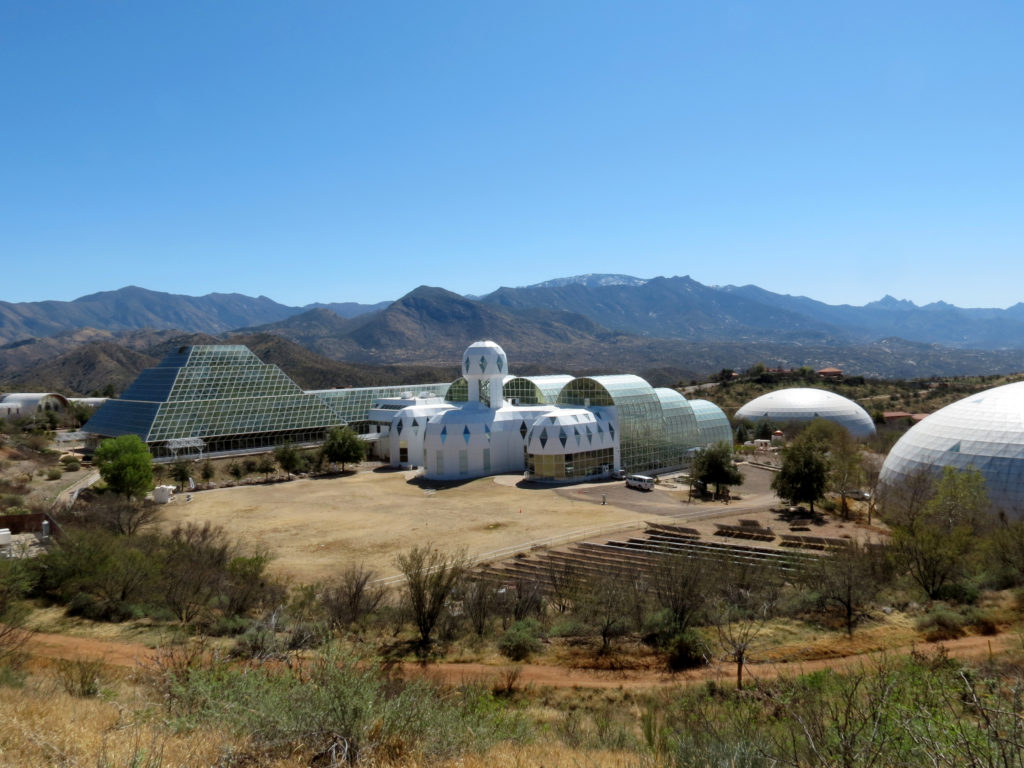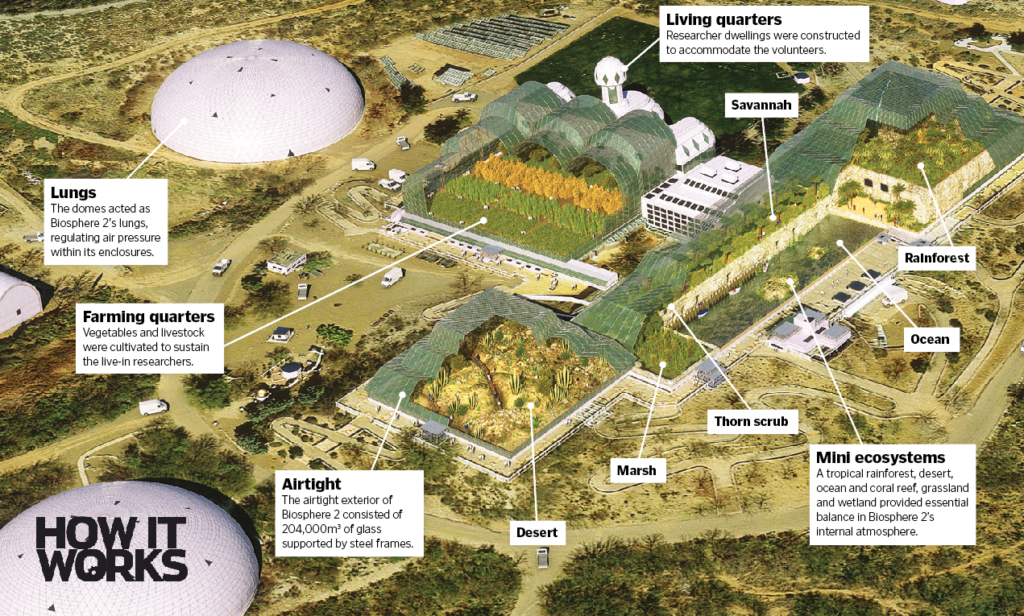Biosphere 2: Earth in a bottle
by Scott Dutfield · 11/11/2019

Image credit: Katja Schulz
Since the early 1990s Biosphere 2 has demonstrated the possibilities and shortfalls of creating a second home on Earth
Completed in 1991, it took four years to create Biosphere 2, an entire ecosystem modelled on the Earth. As climate change and extraterrestrial colonisation were hot topics of the time, the prospect of building a contained ecological system on another planet was at the forefront of engineer John P Allen’s mind.
Allen conceived the idea of a human terrarium to study the effects of life in a bottle. Comprised of five biomes – an ocean with coral reef, tropical rainforest, savannah grassland, fog desert and mangrove wetlands – the project aimed to identify if these systems could work together to sustain life in confinement.
In order to create these ecosystems, samples of life from across the globe were taken and brought to Biosphere 2 in Arizona, US. This even included shipping tons of ocean water – rather than recreating water salinity artificially – so that algae and planktonic organisms could remain with the waters to provide their essential role in an ocean ecosystem.
Today, the 1.27-hectare bio lab is managed by the University of Arizona, who conduct experiments to better understand our changing global climate.
Biosphere Big Brother
To test the validity of an artificial ecosystem, in 1991 eight researchers stepped into the Biosphere 2 and remained inside for two years. The experiment allowed researchers to evaluate the potential of recreating an ecosystem. However, it was not plain sailing. Due to the highly fertile soil used in the agricultural sections, the balance of CO2 and oxygen became wildly out of sync, resulting in the need for CO2 scrubbers and oxygen injections to reduce dangerous levels of CO2 filling the Biosphere 2. Even so, the experiment overall was a success.
Building a biosphere
Discover how the Biosphere 2 sustained life within its walls
Illustration by Nicholas Froder
This article was originally published in How It Works issue 118.
For more science and technology articles, pick up the latest copy of How It Works from all good retailers or from our website now. If you have a tablet or smartphone, you can also download the digital version onto your iOS or Android device. To make sure you never miss an issue of How It Works magazine, subscribe today!





